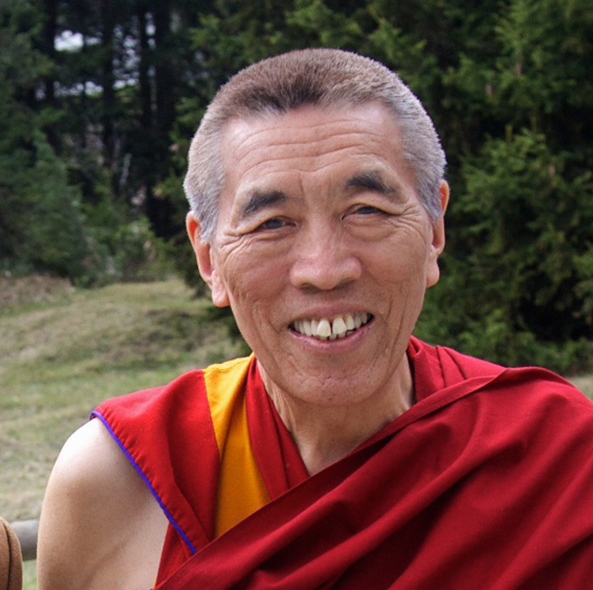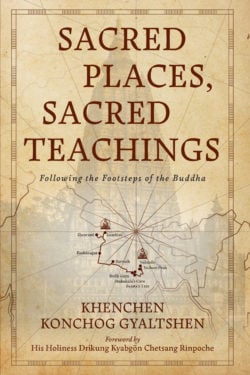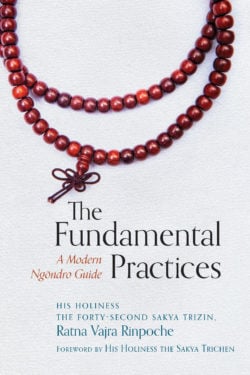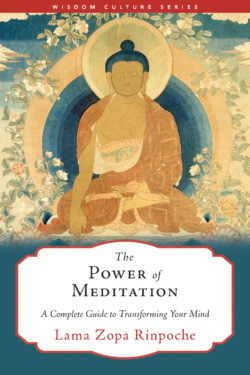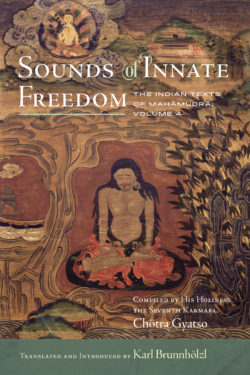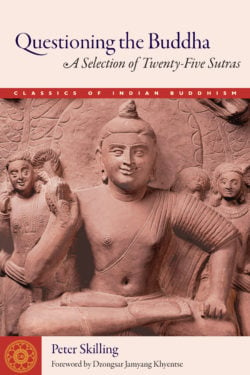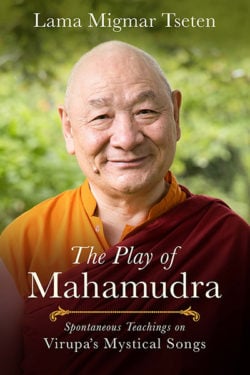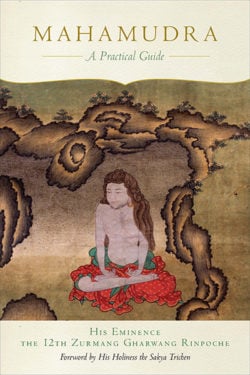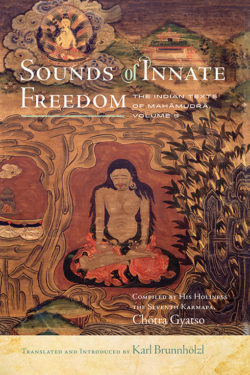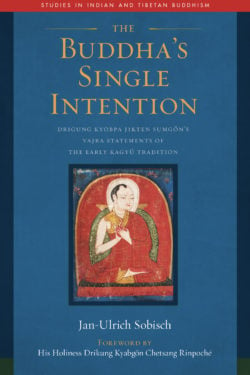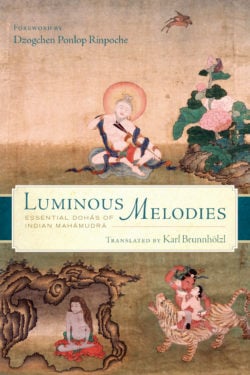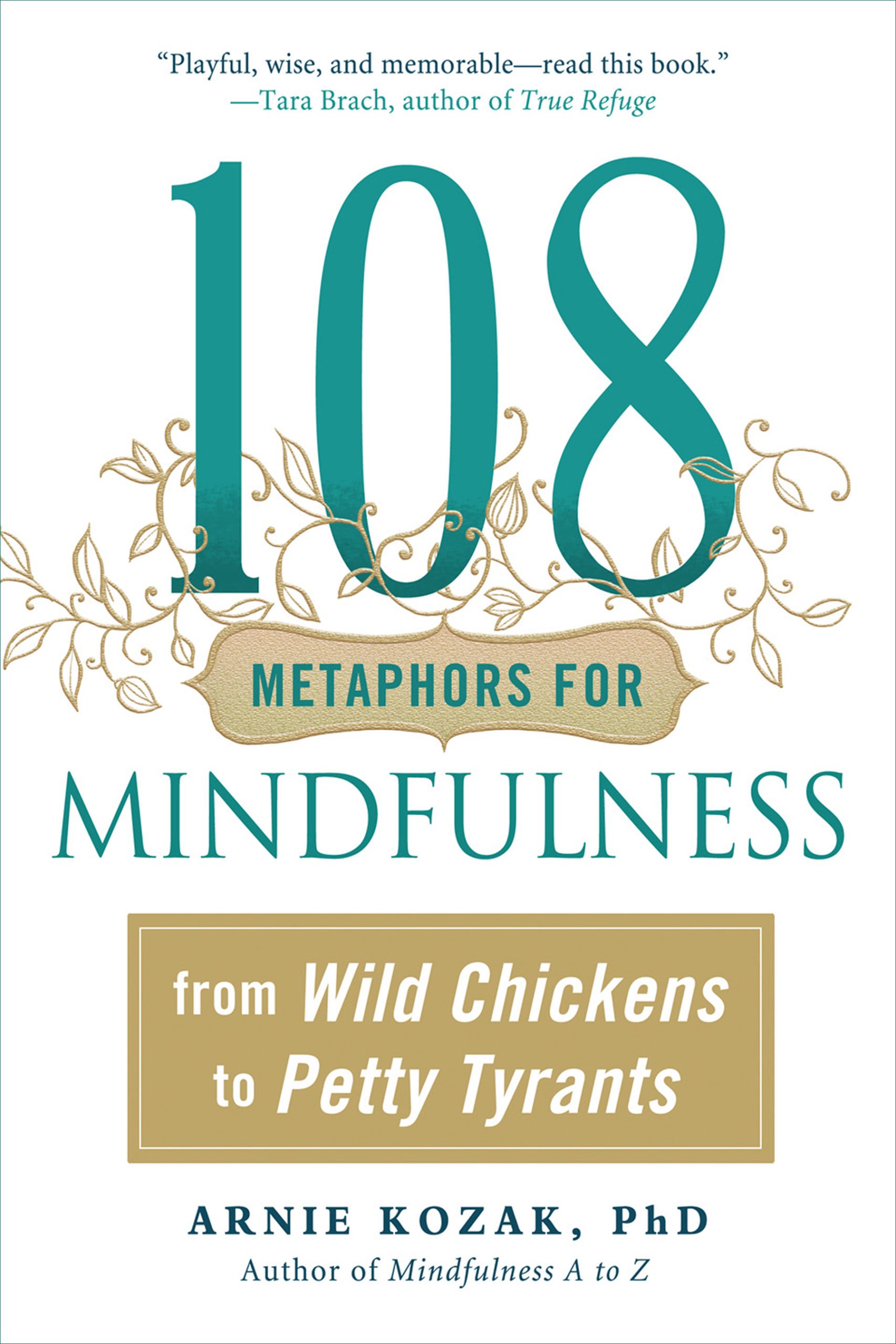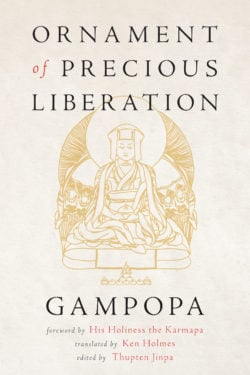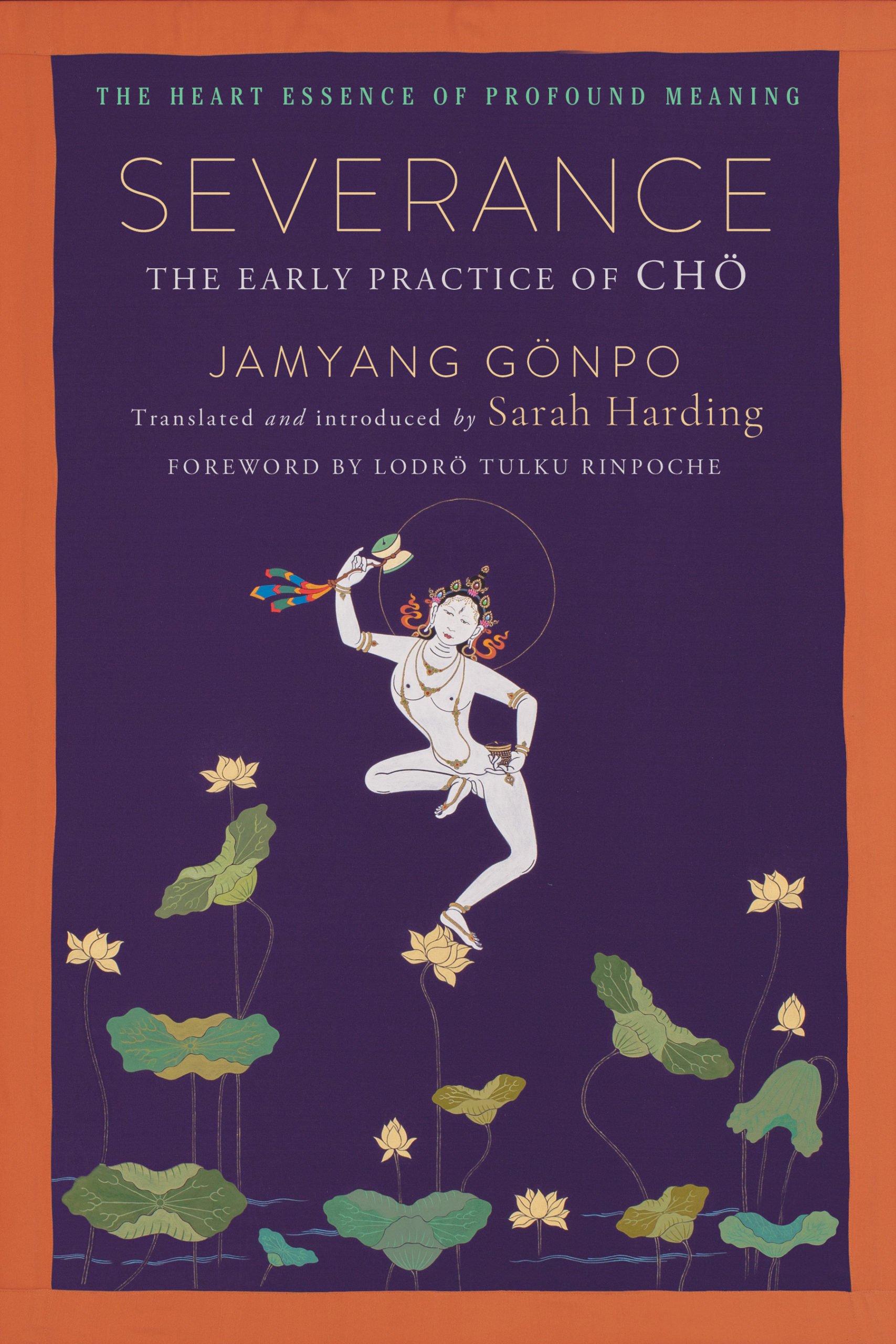
SEVERANCE
An ancient Buddhist guide to confronting difficult circumstances and letting go of clinging to the ego.
Severance, or Cho, is the Tibetan Buddhist practice of facing one’s fears. In three remarkable texts lucidly translated and introduced by Sarah Harding, the thirteenth-century Severance master Jamyang Gönpo shares advice that goes straight to the heart of both understanding and experiencing the practice. For hundreds of years, Severance has remained essentially an instruction on coping with stressful situations that provoke fear and, beyond that, a way to actively seek out such circumstances in order to test one’s realization of perfect wisdom.
The single overall directive of the first two texts in this volume—the Heart Essence of Profound Meaning root verses and their commentary, The Big General Guide to Severance—is to seek out and directly confront difficult circumstances. Here, these difficulties are often anxieties related to spirits in the dark of night in haunted places. This practice acts as a means to recognize emptiness—the lack of intrinsic existence of all phenomena—as well as a testing ground of one’s former realizations and studies of that emptiness from the Perfection of Wisdom. The texts are notable for their lack of instruction on ritualized Severance involving body sacrifice, which later works emphasize; in these texts, the heart of Severance is letting go of clinging to the self and reification of existence. And as Jamyang Gonpo was just a generation removed from Machik Labdron, the main progenitor of Severance, his methods seem to be closest to her actual teachings.
The third translation in this volume, The Seven-Day Severance Retreat Experiential Guide, is a very concise and precise instruction on putting the main intentions of the teachings into practice in the setting of a one-week retreat. The instructions are striking in that they contain no rituals, visualizations, deities, instruments, or liturgies. Jamyang Gönpo shows us how to turn our attention to the very mind of this person who is experiencing fear and the object of that fear—whether fear about demons or sickness or suffering—to see them for what they are. In doing so, we find that joys and sorrows, highs and lows, powers of gods and demons, and demonic obstacles are all mind made.
- Hardcover
- 272 pages, 6 x 9 inches
- $26.95
- ISBN 9798890700001
- eBook
- 272 pages
- $17.99
- ISBN 9798890700100
Discover More
Sit
A popular Buddhist teacher guides you through strategies to build and maintain a rock-solid daily meditation practice—from setting reminders to dealing with setbacks to introducing the philosophical concepts underpinning Buddhist meditation—and everything in between.
It’s widely known that there are many benefits to meditation, particularly if undertaken regularly, but making it a daily habit can be a challenge for many people. Why? Because it takes more than willpower.
Here, longtime meditation teacher and Buddhist blogger Bodhipaksa presents a collection of strategies and tools to help build a rock-solid daily meditation practice into your life. The book is divided into twenty-eight chapters, one for each day.
Each chapter starts with a Practice Reminder, just a few words reminding readers of the importance of practicing meditation rather than merely reading about it. There’s also a link to a web page of guided meditations.
Following that is a Today section, a brief summary of the day’s reading.
Then there’s a Strategies section, which offers suggestions to help readers build the habit of meditating daily. Strategies can be as simple as setting reminders or using a meditation timer, or more involved tools such as changing any belief that you lack what it takes to meditate daily.
That’s followed by a Going Deeper section, with a deeper exploration of some of the Buddhist teachings underpinning our practice, often referring to the suttas, or scriptures, of early Buddhism.
Next is a Reflection section, which encourages readers to keep a journal to make the content of the Going Deeper section more experiential.
Each chapter ends with a Last Words section, quickly summarizing the Going Deeper section.
To help you get started, Bodhpaksa has recorded eighteen meditations for you to listen to and provided a 28-day calendar to help track your deepening meditation habit. Simply scan the QR code in the book for access.
Sacred Places, Sacred Teachings
A guide to following the footsteps of the Buddha—for the pilgrim in India and at home.
The holy sites of India—Bodh Gaya, Sarnath, Shravasti, and others— became holy because the Buddha blessed them by performing his enlightened activities there. When we become holy through our practice of the Buddha’s instructions, then the places we go will be made holy, too. Through meditation practice, we can realize and capture what the Buddha described as the profundity of the mind, which is completely peaceful, free from elaboration, luminous, and uncompounded.
In this wise, heartfelt, and indispensable guide, Khenchen Konchog Gyaltshen takes us on a journey through the major holy sites for Buddhist pilgrimage by offering profound teachings related to each of the sacred places. In Bodh Gaya, the site of the Bodhi tree and the Buddha’s enlightenment, we learn of how the Buddha became enlightened and what it means to take refuge in him; we uncover the profundity of emptiness at the site where the Buddha expounded the Heart Sutra; at the place of the Buddha’s passing, we learn that the legacy of his vast teachings came about through his perfection of bodhicitta—a core quality we can master, too. In chapters based on these and other sacred places, we find that the wisdom the Buddha uncovered is available to us all.
The Buddha discovered total satisfaction, the ultimate achievement, and left instructions on how we, too, can achieve the same. We already have this great path; we just have to follow it. In that way, we experience the joy of following the footsteps of the Buddha.
You can read the introduction to Sacred Places, Sacred Teachings here.
The Fundamental Practices
A wise and warm guide to the preliminary practices that lay the fundamental groundwork for traversing the path to buddhahood.
When we start on the transformational journey to enlightenment, we need a strong foundation in core Buddhist principles and practices to set us on the right track. The ngöndro, or preliminary practices, are that very foundation; they not only prepare us for advanced practice but serve us in all we do. In this guide to the common and uncommon preliminary practices, His Holiness the Forty-Second Sakya Trizin, Ratna Vajra Rinpoche, expertly gives us the grounded, practical, and illuminating teachings we need to set out on the path to buddhahood. Newcomers and seasoned practitioners alike will find practical guidance and profound wisdom to support them through their exploration of the preliminary practices.
The common preliminary practices are the four thoughts that turn the mind away from the suffering of samsara and toward the Dharma: remembering the shortcomings of samsara, remembering the preciousness of a human rebirth, remembering impermanence, and remembering the law of karma. These teachings are shared among traditions and will accompany us all the way to buddhahood. The five uncommon preliminary practices are core to further Mahayana and Vajrayana practice: going for refuge in the Buddha, Dharma, and Sangha; developing bodhichitta, the enlightened mind; Vajrasattva practice, which clears negative karma; mandala offering, which will help us accumulate merit; and guru yoga, which facilitates our realization of the nature of mind.
By using this guide, we can develop a deeper understanding of what Dharma practice truly encompasses and how we can authentically engage in it. His Holiness the Forty-Second Sakya Trizin invites us to appreciate the profound significance of these preliminary practices and experience the transformative benefits they offer—for both ourselves and all sentient beings.
The Power of Meditation
What is meditation, and how do we practice it?
In The Power of Meditation, Lama Zopa Rinpoche, beloved teacher and co-founder of the Foundation for the Preservation of the Mahayana Tradition, offers clear explanations and instructions for the life-changing practice of meditation.
From preparatory procedures, such as selecting a space and adopting the proper motivation, to the details of posture and how to focus the mind, Rinpoche offers step-by-step instruction that serves as both a starting point for beginners and a new vantage on familiar techniques for more experienced sitters. In his own direct and plain-spoken style, Rinpoche offers concise explanations for different kinds of meditation, such as shamatha, or calm abiding meditation, and vipashyana, or insight meditation, delineating their specific techniques and applications. And finally, Rinpoche presents tips for bringing our newfound clarity off of the cushion and into our daily lives, making each moment meaningful.
The Wisdom Culture Series, published under the guidance of Lama Zopa Rinpoche, provides English-language readers with key works for the study and cultivation of the Mahayana Buddhist path, especially works of masters within the lineage of Lama Tsongkhapa and the Geluk school of Tibetan Buddhism.
Digital Dharma
This is the epic story of an international rescue effort to preserve a culture’s literary history.
Originally a Mormon from Utah, E. Gene Smith, founder of the Buddhist Digital Resource Center, became the unlikely mastermind behind an international effort to rescue, preserve, digitize, and provide free access to the vast Tibetan Buddhist canon, many volumes of which had been lost or destroyed during China’s Cultural Revolution.
Digital Dharma is a stunning visual experience offering a behind-the-scenes look into this unprecedented mission. Through hundreds of photographs taken during Smith’s trip to deliver drives containing the digitized volumes to remote monasteries in South Asia, you’ll gain extraordinary and intimate access to life inside Buddhist monasteries, to the rituals of Tibetan Buddhism, and to the insights of some of the world’s leading lamas and lineage holders. Throughout the journey, you’ll meet monks, local publishers, scholars, and dignitaries involved in the preservation movement to which Smith dedicated his life. With the accompanying historical and cultural background, you’ll develop a deeper and more personal understanding of Tibetan Buddhism and of the achievement of preserving and disseminating its sacred canon.
Gene Smith’s legacy lives on in the organization he founded in 1999, the Buddhist Digital Resource Center. BDRC’s founding mission was to digitally preserve the entirety of Tibetan Buddhist literature in order to secure it from destruction. In 2015, it expanded its mission to include all Buddhist traditions. More than twenty years later, BDRC has digitized and archived millions of pages of Tibetan, Pali, Sanskrit, Chinese, Khmer and Newari literature. BDRC is dedicated to seeking out, preserving, documenting, and disseminating Buddhist literature. With its text preservation programs, free online library, digital tools for researchers, and hard drive distribution programs, BDRC provides lamas, scholars, translators, Buddhist practitioners, and the general public with access to an unparalleled collection of Buddhist texts.
Sounds of Innate Freedom, Vol. 4
Sounds of Innate Freedom: The Indian Texts of Mahāmudrā are historic volumes containing many of the first English translations of classic mahamudra literature. The texts and songs in these volumes constitute the large compendium called The Indian Texts of the Mahāmudrā of Definitive Meaning, compiled by the Seventh Karmapa, Chötra Gyatso (1456–1539). The collection offers a brilliant window into the richness of the vast ocean of Indian mahamudra texts cherished in all Tibetan lineages, particularly in the Kagyü tradition, giving us a clear view of the sources of one of the world’s great contemplative traditions.
Besides the individual dohās (couplets), vajragītis (vajra songs), and caryāgītis (conduct songs) in this second volume in publication, the three extensive commentaries it contains brilliantly unravel enigmas and bring clarity not only to the specific songs they comment on but to many other, often cryptic, songs of realization in this collection. These expressive songs of the inexpressible offer readers a feast of profound and powerful pith instructions uttered by numerous male and female mahāsiddhas, yogis, and ḍākinīs, often in the context of ritual gaṇacakras and initially kept in their secret treasury. Displaying a vast range of themes, styles, and metaphors, they all point to the single true nature of the mind—mahāmudrā—in inspiring ways and from different angles, using a dazzling array of skillful means to penetrate the sole vital point of buddhahood being found nowhere but within our own mind. Reading and singing these songs of mystical wonder, bliss, and ecstatic freedom, and contemplating their meaning, will open doors to spiritual experience for us today just as it has for countless practitioners in the past.
Click here to explore other volumes available in The Sounds of Innate Freedom series.
Milarepa’s Kungfu
“This book is a treasure of subtle revelation.”
—Bonnie Nadzam, Lion’s Roar
The view is the wisdom of being empty
Meditation is luminosity without fixation
Conduct is a continual flow free of attachment
Fruition is nakedness bare of any stain
This is the first stanza of Milarepa’s Ultimate View, Meditation, Conduct, and Fruition: pith instructions originally sang to the great yogi Rechungpa, Milarepa’s disciple. These teachings are Milarepa’s direct offering to his disciple of his own profound realization, gained after many years of dedicated practice. Karl Brunnhölzl, acclaimed translator and senior teacher at the Nalandabodhi community of Dzogchen Ponlop Rinpoche, calls this hard-earned understanding “kungfu”: “Gong means ‘skillful work,’ ‘hard training,’ or ‘endeavor,’ and fu means ‘time spent…’ The term refers to Milarepa’s diligent and skillful training in the techniques to realize the nature of his mind and benefit countless sentient beings.”
Ultimate View, Meditation, Conduct, and Fruition is a work of remarkable depth and clarity. In just five verses, Milarepa gives incisive instructions for progressing and for avoiding pitfalls in the stages of practice:
-
- View: the basis or ground from which the proper meditation, conduct, and fruition of mahāmudrā can arise
- Meditation: the training in or the familiarization with that view
- Conduct: the natural outflow of having familiarized with the view in meditation
- Fruition: the final outcome of having fully assimilated and realized the view, whose essence is not different from it
Milarepa dedicates one verse to each stage, and Karl dedicates one chapter to each verse, weaving in wisdom from other Milarepa songs, comments by Khenpo Tsultrim Gyatso and from Karl’s own insight. Readers can thus fully immerse themselves in each point of Milarepa’s extraordinary teaching.
Questioning the Buddha
In the forty-five years the Buddha spent traversing northern India, he shared his wisdom with everyone from beggar women to kings. Hundreds of his discourses, or sutras, were preserved by his followers, first orally and later in written form. Around thirteen hundred years after the Buddha’s enlightenment, the sutras were translated into the Tibetan language, where they have been preserved ever since. To date, only a fraction of these have been made available in English. Questioning the Buddha brings the reader directly into the literary treasure of the Tibetan canon with thoroughly annotated translations of twenty-five different sutras. Often these texts, many translated here in full for the first time, begin with an encounter in which someone poses a question to the Buddha.
Peter Skilling, an authority on early Buddhist epigraphy, archaeology, and textual traditions, has been immersed in the Buddhist scriptures of diverse traditions for nearly half a century. In this volume, he draws on his deep and extensive research to render these ancient teachings in a fresh and precise language. His introduction is a fascinating history of the Buddhist sutras, including the transition from oral to written form, the rise of Mahayana literature, the transmission to Tibet, the development of canons, and a look at some of the pioneers of sutra study in the West.
Sutras included in this volume are: Four Dharmas Not to Be Taken for Granted; The Benefits of Giving; The Exposition of Four Dharmas; The Merit of the Three Refuges; Four Dharmas Never to Be Abandoned; Advice for Bodhisatva Dharmaketu; Advice for Bodhisatva Jayamati; Sūtra Comparing Bodhicitta to Gold; Bodhisatva Maitreya’s Question about the Gift of the Dharma; Four Summaries of the Dharma Spoken to the Nāga King Sāgara; The Stanza of Dependent Arising; The Heart Formula of Dependent Arising; Prediction of the Boy Brahmaśrī’s Future Buddhahood; Kṣemavatī’s Prediction to Future Buddhahood; The City Beggar Woman; An Old Woman’s Questions about Birth and Death; The Questions of Śrīmatī the Brahman Woman; The Questions of the Laywoman Gaṅgottarā; Brahmā Sahāṃpati’s Question; Advice to King Prasenajit; Passage to the Next Life; Instructions for King Bimbisāra; Instructions for King Udayana; Buddhas as Rare as a Grain of Golden Sand; and Predictions on the Eve of the Great Final Nirvāṇa.
Learn more about the Classics of Indian Buddhism series.
Storied Companions
“With my diagnosis of grade IV brain cancer, I no longer observe the truth of impermanence from a critical, analytical distance. I am crashing into it, or it into me.”
Facing a terminal cancer diagnosis, Karen Derris—professor, mother, and Buddhist practitioner—instinctually turned to books. By rereading ancient Buddhist stories with fresh questions and a new purpose in mind, she discovered evolving ways to make them immediate and real. Storied Companions interweaves Karen’s memoir of her lived experiences of trauma and terminal illness with stories from Buddhist literary traditions, sharing with the reader how she found ways to live fully even with the reality that she won’t live as long as she needs—or wants.
Using her knowledge, practice, and imagination, Karen illustrates how placing yourself within narratives can turn them from distant and static sources into companions, and from companions into guides. Reading along with her, you’ll realize how this practice of reading and these ancient narratives can help us come to terms with impermanence, develop empathy and compassion, and realize our own interconnectedness.
Honest, powerful, and insightful, Storied Companions itself becomes an invaluable companion, guiding the reader to discover new ways of facing and experiencing life, death, and impermanence.
The Play of Mahamudra
“This new collected edition of Khenpo Migmar Tseten’s Play of Mahamudra volumes constitutes a veritable treasure for all who are deeply engaged on the path to enlightenment. Khenpo Migmar’s translation of Mahasiddha Virupa’s Treasury of Dohas and of Sachen Kunga Nyingpo’s Praise to Virupa makes us intimately familiar with the essence of these root texts, and his elucidation of the Dohas offers us a deep and clear understanding of their core meaning. Anyone who truly contemplates on Mahasiddha Virupa’s words is certain to attain realization.”
—His Holiness the Sakya Trichen
In this collection, renowned Tibetan Buddhist teacher Lama Migmar Tseten provides essential commentary on the mystical songs of the Indian Buddhist rebel-saint Virupa. One of the most celebrated tantric masters of Buddhist India, Virupa’s songs describe his realization of mahamudra, the ultimate nature of reality. Intimate and highly engaging, The Play of Mahamudra unpacks these songs with meticulous clarity, making Virupa’s insights accessible to modern readers.
Mahāmudrā
“Gharwang Rinpoche’s work serves as a definitive manual, guiding aspiring mahāmudrā students along the complete path, beginning with a clear presentation of the preliminaries, through a detailed presentation of śamatha and vipaśyanā, and concluding with enlightening instructions on the actualization of the result.”
—from the foreword by His Holiness the Sakya Trichen
In this book, His Eminence the Twelfth Zurmang Gharwang Rinpoche offers illuminating commentary on Bokar Rinpoche’s pithy teaching A Concise Commentary on the Ocean of Definitive Meaning, expanding and unlocking it for the reader, showing us the way to understand the very nature of our own minds.
“The line between saṃsāra and nirvāṇa is very thin. This is because saṃsāra is simply the projection of our minds, a projection created by confusion. Nirvāṇa is simply freedom from this confusion. You can sit on either side of the line between saṃsāra and nirvāṇa. It’s up to you. But although the line is very thin, it takes extraordinary skill and profound wisdom to traverse the path from one side to the other—to dissolve the division itself. This book and these teachings are intended to serve as support for that journey.”
—from H.E. Zurmang Gharwang Rinpoche’s introduction
Sounds of Innate Freedom, Vol. 5
Sounds of Innate Freedom: The Indian Texts of Mahāmudrā are historic volumes containing many of the first English translations of classic mahāmudrā literature. The texts and songs in these volumes constitute the large compendium called The Indian Texts of the Mahāmudrā of Definitive Meaning, compiled by the Seventh Karmapa, Chötra Gyatso (1456–1539). The collection offers a brilliant window into the richness of the vast ocean of Indian Mahāmudrā texts cherished in all Tibetan lineages, particularly in the Kagyü tradition, giving us a clear view of the sources of one of the world’s great contemplative traditions.
This first volume in publication contains the majority of songs of realization, consisting of dohās (couplets), vajragītis (vajra songs), and caryāgītis (conduct songs), all lucidly expressing the inexpressible. These songs offer readers a feast of profound and powerful pith instructions uttered by numerous male and female mahasiddhas, yogīs, and ḍākinīs, often in the context of ritual gaṇacakras and initially kept in their secret treasury. Displaying a vast range of themes, styles, and metaphors, they all point to the single true nature of the mind—mahāmudrā—in inspiring ways and from different angles, using a dazzling array of skillful means to penetrate the sole vital point of buddhahood being found nowhere but within our own mind. Reading and singing these songs of mystical wonder, bliss, and ecstatic freedom, and contemplating their meaning in meditation, will open doors to spiritual experience for us today just as it has for countless practitioners in the past.
Click here to explore other volumes available in The Sounds of Innate Freedom series.
The Buddha’s Single Intention
This book presents an influential and extraordinary teaching of the Kagyü tradition of Tibetan Buddhism known as the Single Intention by the master Drigung Kyobpa Jikten Sumgön (1143–1217), along with its chief commentaries, principally the Light of the Sun by Rikzin Chökyi Drakpa (1595–1659).
Early in the history of the Kagyü school, the teachings of Jikten Sumgön were condensed into 150 core formulations called vajra statements. These pithy, revelatory statements comprise the Single Intention (Dgongs gcig), which presents the thought of the Buddha and the nature of the ineffable (brjod du med pa) in concise and direct expression. The Single Intention weaves the thread of ineffable mahāmudrā through the entire fabric of Buddhism. It presents mahāmudrā as pervading disciplined conduct, meditative concentration, and discriminative knowledge; ground, path, and result; view, practice, and conduct; and the “three vows” of prātimokṣa, of the bodhisattvas, and of mantra. Jikten Sumgön teaches how the fundamental values and insights revealed by the Buddha are woven into reality and therefore accessible to all.
Jan-Ulrich Sobisch manages to convey the unity of the Buddha’s message both in its particulars and in its scope. His deep and authoritative skill makes this the definitive presentation of one of the most unique and compelling works of classical Tibetan literature.
Learn more about the Studies in Indian and Tibetan Buddhism series.
Luminous Melodies
Presented here for the first time in English is a collection of dohās, or songs of realization, carefully and thoughtfully selected and translated from the large compendium the Indian Texts of the Mahāmudrā of Definitive Meaning, which was compiled by the Seventh Karmapa and drawn primarily from the Tengyur.
Beautiful, profound, and often outrageous, these verses were frequently composed spontaneously and thus have a moving sense of freedom, openness, and bliss. They range from summaries of the entire path of Mahāmudrā to pithy four-liners that point directly to the buddha within us. The authors include famous masters such as Saraha and Nāropā, ḍākinīs, kings, and also courtesans and cobblers—showing that realization is accessible to all of us, right here in our lives.
A Direct Path to the Buddha Within
Maitreya’s Ratnagotravibhāga, also known as the Uttaratantra, is the main Indian treatise on buddha nature, a concept that is heavily debated in Tibetan Buddhist philosophy. In A Direct Path to the Buddha Within, Klaus-Dieter Mathes looks at a pivotal Tibetan commentary on this text by Gö Lotsāwa Zhönu Pal, best known as the author of the Blue Annals. Gö Lotsāwa, whose teachers spanned the spectrum of Tibetan schools, developed a highly nuanced understanding of buddha nature, tying it in with mainstream Mahāyāna thought while avoiding contested aspects of the so-called empty-of-other (zhentong) approach. In addition to translating key portions of Gö Lotsāwa’s commentary, Mathes provides an in-depth historical context, evaluating Gö’s position against those of other Kagyü, Nyingma, and Jonang masters and examining how Gö Lotsāwa’s view affects his understanding of the buddha qualities, the concept of emptiness, and the practice of mahāmudrā.
Learn more about the Studies in Indian and Tibetan Buddhism series.
Read Go Lotsawa’s biography at the Treasury of Lives.
Mahamudra
Lama Yeshe tells us that mahamudra is “the universal reality of emptiness, of nonduality” and its unique characteristic is its emphasis on meditation: “With mahamudra meditation there is no doctrine, no theology, no philosophy, no God, no Buddha. Mahamudra is only experience.”
He relies on the First Panchen Lama’s well-known Root Text of Genden Mahamudra, which in a few short pages provides the pith instructions for, first, overcoming distraction and resting in meditative stillness on the clarity of one’s own mind, and then by using a subtle wisdom, penetrating its ultimate nature, its emptiness.
As always, Lama Yeshe’s words are direct, funny, and incredibly encouraging. He gets us to go beyond ego’s addiction to a limited sense of self and to taste the lightness and expansiveness of our own true nature.
108 Metaphors for Mindfulness
This engaging and accessible little book is filled with both humor and profound teaching. It presents 108 metaphors for mindfulness, meditation practice, the nature of the self, change, deep acceptance, and other related concepts that Dr. Kozak has cultivated over twenty-five years of meditating, practicing yoga, and working as a clinical psychologist.
Metaphors are indispensable to understanding mindfulness, and to help deeply internalize it and make it a part of everyday life. These mentally catchy images can motivate us to practice, show us how and where to bring mindfulness to life in our personal experience, and help us employ powerful methods for transformation.
This book was previously published under the title Wild Chicken and Petty Tyrants.
Ornament of Precious Liberation
Discover the heart of the Buddha’s teachings in this new and beautiful translation of Gampopa’s classic guidebook.
Ornament of Precious Liberation is a spiritual and literary treasure of Tibetan Buddhism and of the Kagyü lineage in particular. Laying out step-by-step the path to buddhahood that is open to us all, to read Gampopa’s text is like receiving the teachings directly from the master himself.
It is a quintessential guide to enlightenment that students will return to again and again for its insights into living an awakened life.


